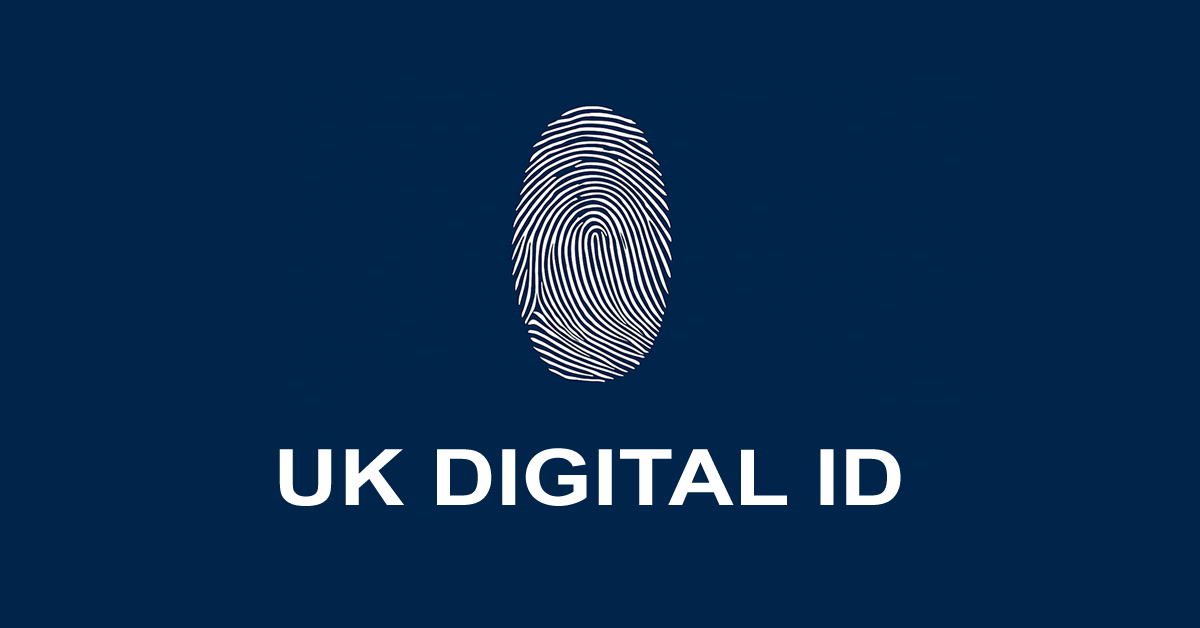The government’s plan to roll out a UK-wide digital ID is no longer a speculative concept; it’s policy in motion. Officials present it as a secure, convenient way for citizens and residents to prove who they are, starting with a mandatory right-to-work credential. But privacy and data protection professionals are right to be cautious. What’s being proposed is not merely a login system; it’s a new identity infrastructure, and that comes with deep, structural risks.
This isn’t about whether digital ID is good or bad. It’s about how it’s designed, governed, and constrained; because in the digital age, the difference between empowerment and surveillance is only a few architectural decisions apart.
What Is Being Proposed
The UK Digital Identity and Attributes Trust Framework, developed by the Department for Science, Innovation and Technology, sets the rules for verifying identities and sharing key attributes. Providers that meet those standards can become certified services listed on a government register. The framework aims to create an ecosystem of trusted issuers, rather than a single central database.
Running parallel to that is GOV.UK One Login, the government’s attempt to unify access to online public services. It already holds verified identities for users of HMRC, DVLA, and DWP systems. The plan now, according to both government releases and Parliamentary discussion, is to make digital ID mandatory for right-to-work checks, and likely extend it to rental agreements and other services.
Pilot projects, such as a digital veterans’ card, are already being used to test the concept and the Home Affairs Committee has opened an inquiry into the technology’s wider implications; a welcome step, though many critics argue it should have come sooner.
The Case For Digital ID
It’s easy to forget that a well-implemented digital ID system can actually reduce the amount of data circulating about us.
Today, every employer, landlord, and service provider holds scanned passports, photocopied utility bills, or emailed proof of address. Those fragmented records sit on unsecured drives and inboxes across the country. In theory, a digital credential that allows an organisation to simply confirm a “yes/no” response; “this person has the right to work”, could cut the risk of data leakage dramatically.
If that credential were built using privacy-preserving cryptography, such as selective disclosure or zero-knowledge proofs, it could verify specific facts without exposing the underlying personal data and done well, it could deliver the holy grail of modern identity – proof without disclosure.
From a compliance point of view, a properly scoped digital ID could also streamline organisations’ obligations under UK GDPR; fewer copies of personal data means lower breach exposure, less duplication, and potentially lower compliance overhead.
There’s also a potential benefit in accountability. Unlike paper documents, digital systems can generate audit trails showing when and by whom an identity was checked; providing transparency both to users and regulators. When combined with independent certification under the Trust Framework, this could raise the baseline of identity assurance across multiple sectors.
The Risks
But the optimism stops there if design discipline fails; from a data protection standpoint, the danger lies in scope creep and centralisation.
The government insists there will be no “central register,” yet history tells us these systems often evolve that way. Once a credential exists, the pressure to repurpose it for new tasks: tenancy checks, healthcare, voting, even travel; becomes irresistible. Each expansion erodes purpose limitation, one of the cornerstones of GDPR.
Even if the core database remains decentralised, the surrounding ecosystem such as verifiers, brokers, and service providers; can quickly form a network capable of cross-referencing user activity. Without strict controls, those data flows could create an effective shadow profile of citizens’ lives.
Technically, the risks are formidable. A national ID system is a honeypot by design; even if the cryptography holds, compromise of any significant integrated party could expose metadata that reveals where and how often a person’s credential was used. Breaches in similar systems overseas have shown that trust can evaporate overnight.
Then there’s the question of digital exclusion; millions of older adults or low-income citizens still lack smartphones or consistent internet access. Promises of “alternative options” often turn into second-tier service and if access to work or welfare depends on digital verification, the social and ethical implications are severe.
Finally, and perhaps most critically, is trust. Polling data throughout 2025 shows a consistent pattern; the majority of UK citizens do not trust government to manage digital identity data safely. Once public confidence is lost, it’s almost impossible to regain and no amount of cyber security hardening can compensate for a deficit of social legitimacy.
Privacy By Design
For this system to be anything other than a privacy catastrophe, several principles must be enshrined in both law and code:
Data minimisation must be absolute.
The system should enable organisations to verify attributes; not identities, wherever possible. No one checking a right to work should ever see your passport number, date of birth, or home address.
Federation must mean separation.
If the model is federated, there must be technical and legal walls preventing back-end correlation of user activity across different services. Per-service identifiers, encrypted routing, and strict segregation of audit logs are non-negotiable.
Purpose limitation needs to be written into statute.
If new use cases emerge, they should require fresh legislation, a public Data Protection Impact Assessment (DPIA), and independent scrutiny from the Information Commissioner’s Office (ICO) and Parliament. Quiet mission creep via secondary regulations or private-sector integration should be off the table.
Transparency and user control should be built in from day one.
Individuals must be able to see who has verified their credential, challenge misuse, and revoke access. This is not a feature; it’s a condition of trust.
Inclusion cannot be an afterthought.
A fully equivalent non-digital route must exist; one that is fast, dignified, and accessible to all. Anything less risks embedding structural discrimination.
Independent oversight is crucial.
Certification under the Trust Framework must not be a one-time audit. Continuous monitoring, regular public summaries of security assessments, and open red-team results would go far to demonstrate genuine accountability.
Compliance
For businesses and public bodies likely to interact with the scheme, the first step is a Data Protection Impact Assessment (DPIA). The goal isn’t just compliance; it’s to understand what data you truly need. Can you confirm a user’s right to work without storing their full ID document? Can you consume a yes/no proof rather than a full record?
Map where identity data currently lives within your organisation, then design your systems to store less, for less time. Treat identity proofs as volatile; something to verify and discard, not archive. Align your contracts with the Trust Framework’s certification standards, ensure rapid breach notification clauses are in place, and train your staff accordingly. The fewer people handling identity data, the lower your risk.
And remember the human side; communicate clearly with staff, customers, and applicants. Explain what’s being verified, what isn’t, and how data is protected; in privacy, clarity is the ultimate safeguard.
Conclusion
The UK’s digital ID could either become a benchmark for privacy-preserving identity; or a slow-motion surveillance state. The difference will rest on architecture, oversight, and restraint. There is nothing inherently dangerous about digital identity; what’s dangerous is poor governance.
If the government can deliver a system that proves facts without disclosing identities, limits its own powers by design, and remains inclusive by law, it could rebuild trust in digital public services. But if expedience and mission creep take hold, the scheme may prove another cautionary tale in the long history of British data policy missteps.
Either way, the conversation now belongs to us all; not just technologists, but citizens, businesses, and policymakers who understand that identity is power, and power must always be accountable.
Sources
- UK Digital Identity and Attributes Trust Framework
- Certification scheme for the UK Digital Identity and Attributes Trust Framework
- Enabling the use of digital identities in the UK
- Home Affairs Committee inquiry: Harnessing the potential of new forms of digital ID
- ICO – A Guide to Data Security (UK GDPR)
- House of Commons Library Research Briefing: Digital ID in the UK (Oct 2025)
- Institute for Government – Digital ID Cards Explainer (Sept 2025)
- Tony Blair Institute – Time for Digital ID: A New Consensus for a State That Works (2025)
- Bird & Bird – Digital Identity and Trust Overview (2025)
- Reuters – Britain to Introduce Compulsory Digital ID for Workers (26 Sept 2025)
- Reuters – Why Is Britain Talking About ID Cards Again? (30 Sept 2025)
- The Guardian – Ministers Begin Charm Offensive to Win Over Labour MPs Sceptical of Digital ID Plans (16 Oct 2025)
- Computer Weekly – Digital ID Risks Turning UK into Checkpoint Britain (2025)
- Big Brother Watch – No2DigitalID Campaign Page
- Open Banking Expo – Home Affairs Committee Opens Inquiry into Forms of Digital ID (June 2025)





